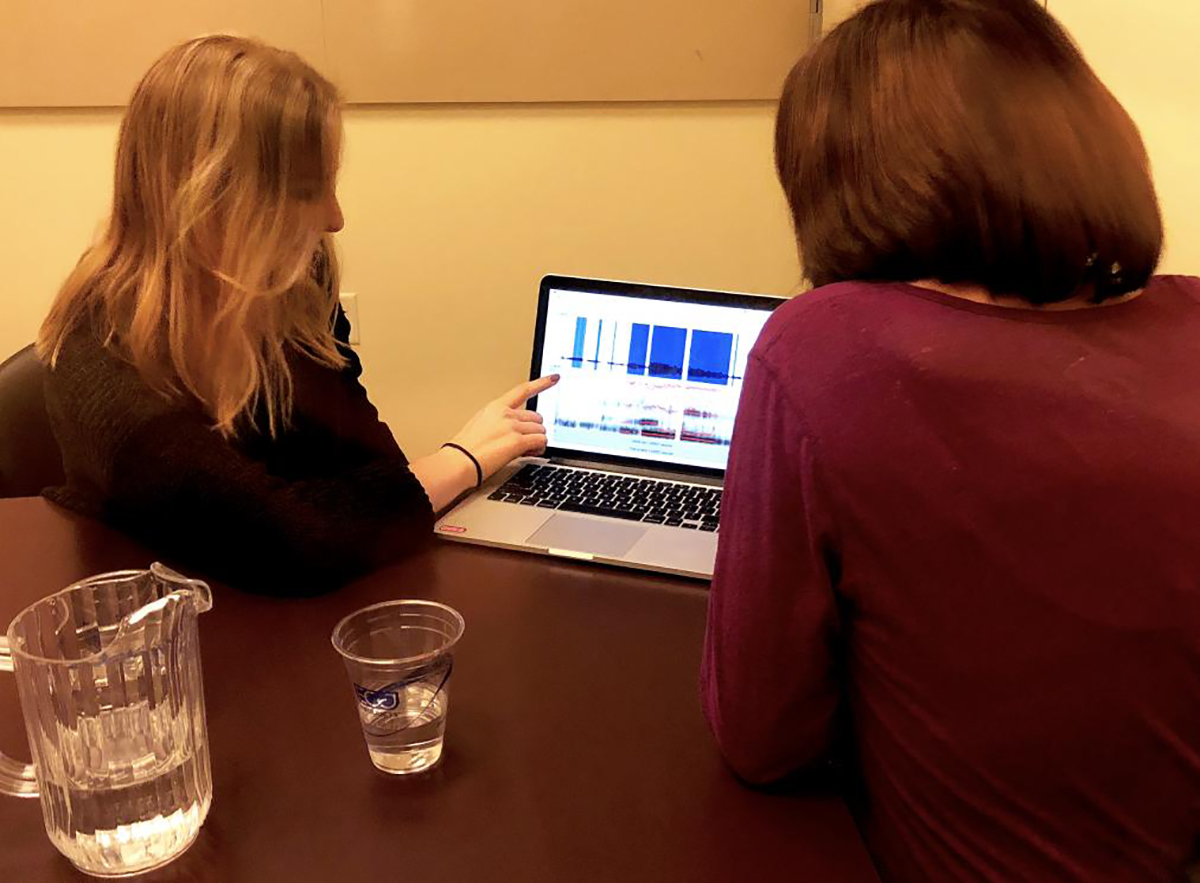Emerson Leading the Way in Transgender Voice Communication

In a first for the Boston area, Communication Disorders graduate students are using cutting-edge speech pathology services to help transgender people use the voice that best matches their identity.
For the last few years, inside Emerson’s Robbins Speech, Language and Hearing Center, students have been piloting individual therapy sessions with transgender voice communication clients ranging in ages from their early teens to late 70s. This summer, the Communication Sciences and Disorders (CSD) department is offering participants access to a Transgender Voice and Communication Group Pilot Program focused on vocal feminization, running weekly from May 23 through August 1.
“There are four graduate programs in speech pathology in the Boston area, and we are very proud that we are the first one to be offering a specific transgender voice program for clients,” said CSD clinical instructor Jena Castro-Casbon, MSSp ’05, a licensed speech-language pathologist.
“We’re in this unique position to offer services to an underserved and growing population,” she said. “I think this is one of the most innovative things the CSD graduate program is doing right now – not just at Emerson College – but in the Boston area.”
Four graduate students, an undergraduate student, and two clinical instructors are working with clients on group and individual therapy activities. This fall, CSD is hoping to offer two transgender voice communication groups: one for feminization and one for masculinization. The department also helps clients who want to sound gender neutral.
As more people who are transgender, nonbinary, or gender nonconforming seek speech pathology services to modify their voices and communication styles to match their gender identity, Emerson CSD faculty and staff are adapting their skills to cater toward this growing population.
“I think Boston is fertile ground for training open-minded clinicians to do this kind of work, and who knows where these clinicians could end up?” Castro-Casbon said. “So we’re training the next generation of speech language pathologists to be able to provide services that are on the cutting edge of clinical practice.”
During some female-to-male transitions, the hormone testosterone helps to change vocal range by deepening the voice. However, there are no vocal changes associated with estrogen (used in some male-to-female transitions), which is what the majority of people whom CSD serves use. Not all transgender people take hormones.
First-year graduate student Sarah Tanner, whose master’s thesis examines intonation and how it pertains to gender perception, will help lead this summer’s group sessions.
“I think a lot of people assume this is all about just trying to make someone talk with a higher voice or a lower voice, but there’s a lot more to it, and that’s what makes it really complicated,” Tanner said. “There are many layers to what makes that split-second decision in gender identification, and that makes it really hard for people to work on and really interesting to be the one helping.”
Males tend to speak from the chest, while female speech tends to originate more in the mouth and nose, according to Castro-Casbon. In addition, women typically use more varied intonation and longer vowel sounds than men, she said.
During CSD’s transgender voice communication program, clients will learn to modify their vocal resonance by keeping their vocal tract relaxed, support their voice with breathing techniques, channel air and vibration in certain areas, prolong or shorten vowels, and recognize changes in vocal vibration and pitch.
“A lot of it is building self-awareness of how it feels, how it sounds, and how to get to that sound and maintain it,” clinical instructor Jocelyne Leger, MSSp ’97 said. “We see a huge need in the community and we’re trying to figure out the best way to serve as many people as possible.
“The students are excited because they’re building the [transgender voice communication] program with us, so it’s a great opportunity that students are not often offered – to be a part of something new and help create it,” Leger said.
Categories